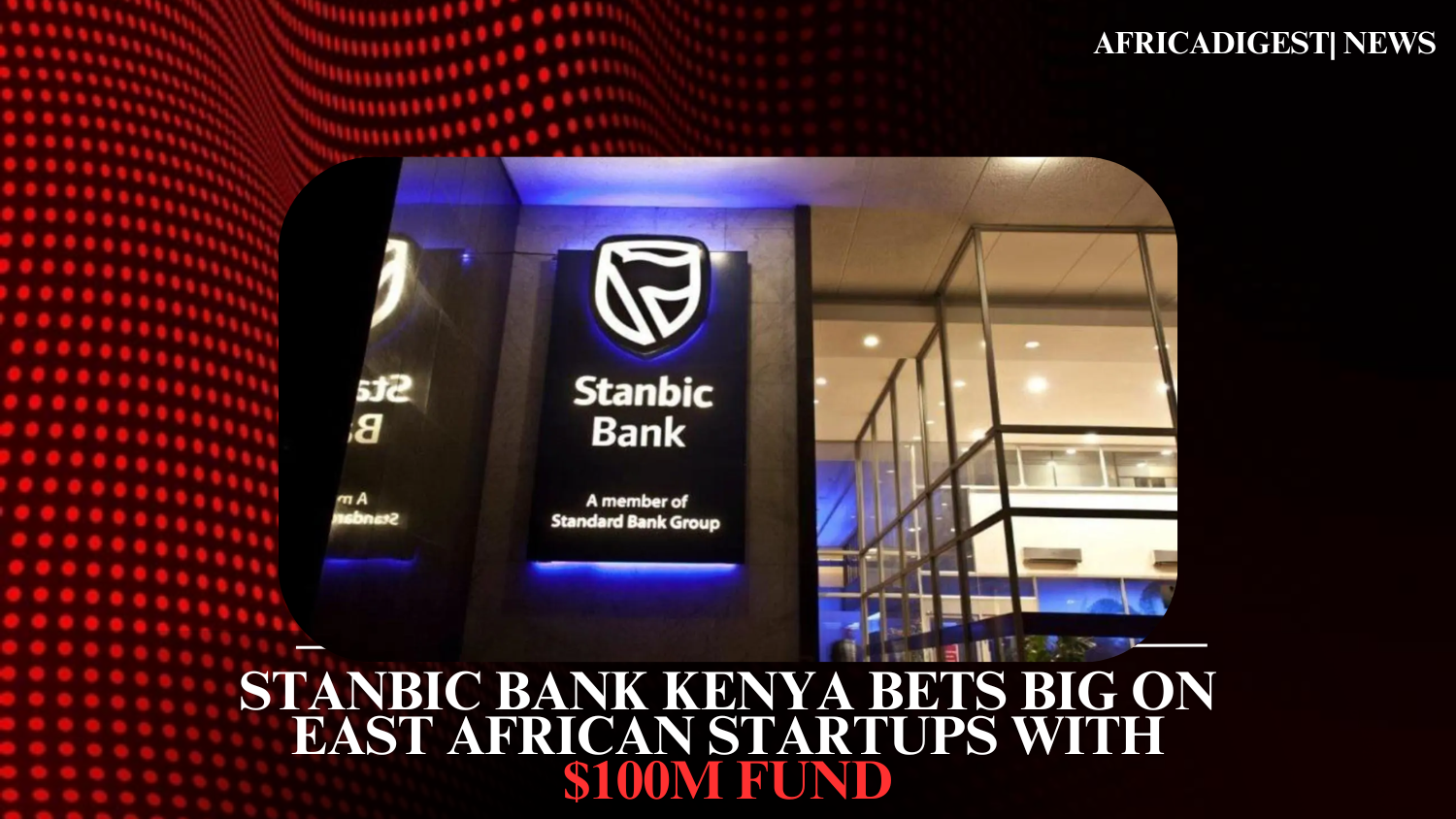Stanbic Bank Kenya, the sixth-largest bank by assets in the country, is making an exceptional move by raising $100 million (KES 12.9 billion) to empower startups and small and medium enterprises (SMEs) across East Africa.
This bold initiative could reshape the region’s startup ecosystem by addressing the chronic funding gap faced by early-stage ventures.
A New Era for Startup Financing
Unlike traditional commercial banks, which often shy away from the risks associated with startups, Stanbic Bank Kenya is taking a visionary approach.
The Catalytic Fund, launched in 2020, provides patient capital to de-risk early-stage businesses, enabling sustainable growth in sectors where access to credit is limited.
According to Joshua Oigara, CEO of Stanbic Bank Kenya, the fund aims to bridge the gap for ventures that are typically overlooked by conventional lenders.
The bank’s $100 million fundraising goal marks a significant escalation from its previous efforts. Since its inception, the Catalytic Fund has disbursed KES 182.4 million ($1.4 million), with KES 63 million ($487,616) allocated in 2024 alone.
While these amounts are modest, they target underserved sectors like agriculture, technology, education, and creative arts, where funding is scarce or prohibitively expensive.
READ ALSO:Stanbic Bank Kenya Reports Solid Growth in Profit and Revenue for Q3 2024
Key Sectors in Focus
Stanbic’s Catalytic Fund is strategically targeting industries with high growth potential and significant social impact:
- Agritech: Addressing food security and optimising supply chains, agritech startups are critical to East Africa’s economic resilience.
- Healthtech: Innovations in telemedicine and healthcare delivery are expanding access to quality care in underserved regions.
- Creative Economy: From music to digital arts, the creative sector is gaining adoption as a driver of economic growth.
- Manufacturing: Supporting SMEs in manufacturing strengthens local production and job creation.
By focusing on these sectors, Stanbic is aligning its investments with East Africa’s economic priorities, fostering innovation where it’s needed most.
Why This Matters for East Africa’s Startup Ecosystem
East Africa, led by Kenya, is a hub for innovation, with Nairobi earning the title “Silicon Savannah”. In 2024, Kenya alone attracted KES 82.5 billion in startup funding, accounting for 88% of East Africa’s total venture capital.
However, structural challenges like limited access to capital, overconcentration in Nairobi, and gender disparities continue to hinder growth. Stanbic’s $100 million fund could address these barriers by:
- Bridging the Funding Gap: Many startups and SMEs struggle to secure financing due to the risk-averse nature of traditional banks. The Catalytic Fund’s patient capital model offers flexible, long-term support, particularly for projects in agriculture and energy that may take years to mature.
- Promoting Financial Inclusion: By targeting underserved sectors and entrepreneurs, including women-led businesses, the fund aligns with regional efforts to enhance financial inclusion. This complements initiatives like Stanbic’s partnership with GIZ to support women in green businesses across Kenya, Tanzania, and Uganda.
- Driving Regional Impact: The fund’s East African scope extends beyond Kenya, encouraging cross-border collaboration and supporting startups in emerging hubs like Tanzania, which raised $53 million in 2024.
A Catalyst for Long-Term Growth
Stanbic’s initiative is a rare move for a commercial bank, as venture capital and development finance institutions (DFIs) typically dominate startup funding.
By scaling its Catalytic Fund tenfold, Stanbic aims to redefine how banks engage with the startup ecosystem. The fund’s focus on “patient capital” is particularly significant, as it allows businesses in capital-intensive sectors like agriculture and energy to grow without the pressure of immediate returns.
This approach also aligns with broader trends in African startup funding.
In the first five months of 2025, African startups raised $1.055 billion, a 40% increase year-on-year, with Kenya, Nigeria, South Africa, and Egypt capturing 84% of the total. Stanbic’s fund could accelerate this momentum, particularly in East Africa, where fintech, agritech, and healthtech are driving digital transformation.
READ ALSO:Stanbic Bank Kenya Embraces Modernization with Orion Innovation
What Investors Should Know
For investors, Stanbic’s Catalytic Fund presents a unique opportunity to tap into East Africa’s burgeoning startup ecosystem. Key considerations include:
- High-Impact Sectors: Investments in agritech, healthtech, and the creative economy offer both financial returns and social impact.
- Regional Reach: The fund’s East African focus provides exposure to multiple markets, reducing reliance on Kenya’s Nairobi-centric ecosystem.
- Sustainability Focus: With partnerships like GIZ and a commitment to green businesses, Stanbic is positioning itself as a leader in sustainable finance.
A Spark for East Africa’s Future
Stanbic Bank Kenya’s $100 million Catalytic Fund is a bold bet on the potential of East African startups and SMEs.
By targeting high-impact sectors and providing patient capital, the bank is not only addressing the financing gap but also setting a precedent for how commercial banks can drive innovation.
As East Africa continues to lead Africa’s digital transformation, Stanbic’s initiative could be the spark that propels the region’s startup ecosystem to new heights.
Ronnie Paul is a seasoned writer and analyst with a prolific portfolio of over 1,000 published articles, specialising in fintech, cryptocurrency, and digital finance at Africa Digest News.







Leave a Reply